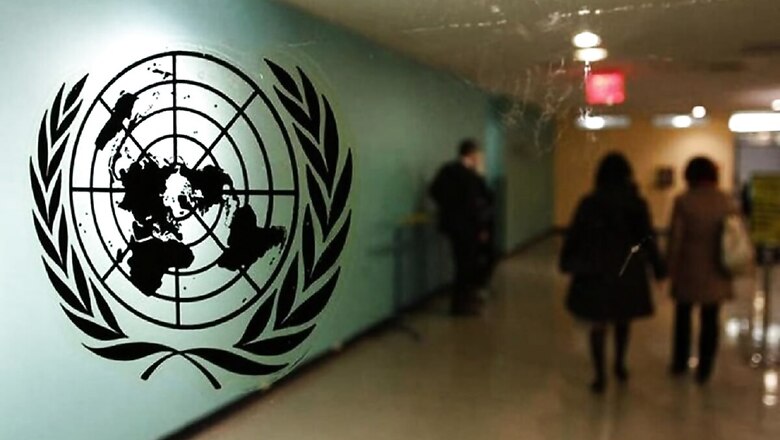
views
India’s economy could prove to be the “most resilient” in the subregion of South and South-West Asia over the long term, according to a report by the UN, which says a positive but lower economic growth post COVID-19 pandemic and the country’s large market will continue to attract investments. The report titled ‘Foreign Direct Investment Trends And Outlook In Asia And The Pacific 2020/2021’, and compiled by United Nations Economic and Social Commission for Asia and the Pacific (UNESCAP), stated that inward FDI flows to South and South-West Asia slightly decreased by 2 per cent in 2019, from USD 67 billion in 2018 to USD 66 billion in 2019.
The growth, however, was mainly driven by India, which accounted for 77 per cent of the total inflows to the subregion and received USD 51 billion in 2019, up 20 per cent from the previous year. The report, released last week, said the majority of these flows were destined for the Information and Communications Technology (ICT) and the construction of sub-sector.
Regarding the ICT sector, the report said the investment to India has evolved from information technology services for Multinational enterprises (MNEs) to the thriving local digital ecosystem where many domestic players, especially in e-commerce, have attracted considerable international investment. The report added that FDI outflows from South and South-West Asia increased for the fourth consecutive year, modestly growing from USD 14.8 billion in 2018 to USD 15.1 billion in 2019.
The geographical spread of FDI outflows from the subregion remained uneven, with just two countries (India and Turkey) accounting for the vast majority of outflows in 2019, it said. As such, the slight increase in outward FDI was predominantly due to an increase in outflows from India, which accounted for 80 per cent of total outward investment from the subregion, the report said, adding that in 2019, India invested USD 12.1 billion abroad, a 10 per cent increase compared with the previous year.
The report noted that in the short term, both inflows and outflows from and to the subregion are expected to decline. In the first three quarters of 2020, the value of greenfield FDI inflows declined by 43 per cent compared to the same period last year, signaling a reversal of the growth trend in the subregion.
Most of the greenfield flows (87 per cent) were destined for India, although the overall greenfield inflows to the country declined by 29 per cent. Equally, FDI from India is projected to decline in 2020, with the largest MNEs revising their earnings down by 25 per cent in early 2020 due to the impacts of the pandemic. However, India’s economy could prove the most resilient in the subregion over the long term. FDI inflows have been steadily increasing and positive, albeit lower, economic growth after the pandemic and India’s large market will continue to attract market-seeking investment, the report said.
India’s fast-growing telecom and digital space, in particular, could see a faster rebound as global venture capital firms and technology companies continue to show interest in the country’s market through acquisitions, it said. It noted that Facebook and Google’s investment in Jio Platforms in 2020 worth USD 5.7 billion and USD 4.5 billion respectively were testaments to this trend.
Estimates suggest that by 2025, core digital sectors such as IT and business process management, digital communication services, and electronics manufacturing could double in size. In addition, the pandemic has only further increased the tendency of many sectors such as agriculture, education, energy, financial services, logistics to digitalise, as COVID-19 has pushed many individual and companies to adopt digital solutions and processes, the report said.
India has implemented a number of noteworthy investment policies and measures since 2019. Some of them include the relaxation of limits to FDI in the insurance sector, liberalisation of FDI rules which ended equity caps in several sectors including coal and lignite mining, contract manufacturing and single brand retail trading and increase in ceiling for FDI into the defense sector to 74 per cent via automatic approval route, it said. In addition to these measures, and in direct response to the COVID-19 pandemic, the government also introduced intensified FDI screening procedures from neighbouring countries, including Afghanistan, Bangladesh, China and Nepal, it said.
The report said that as in previous years, inflows of greenfield investments have been unevenly distributed across the Asia-Pacific region. In 2019, Vietnam received the second largest share of inward greenfield investment (11 per cent), followed by India (10 per cent), and Sri Lanka (8 per cent). Looking ahead, in the short-term investment in pharmaceutical manufacturing is forecast to decrease as many European and United States pharmaceutical companies may switch partly to more localised sourcing owing to supply-chain disruptions in the pharmaceuticals sector during COVID-19 pandemic.
This will be important for pharmaceutical manufacturing hubs in the region, particularly in India, the report said. The report said that Asia-Pacific’s share in global FDI inflows dropped from 45 per cent in 2018 to 35 per cent in 2019, and its share in global FDI outflows decelerated from 52 per cent to 41 per cent.
Read all the Latest News, Breaking News and Coronavirus News here

















Comments
0 comment